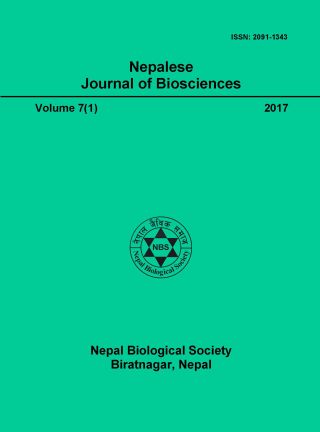Use of the Greater Duckweed as feed for the Tilapia fish
DOI:
https://doi.org/10.3126/njbs.v7i1.41799Keywords:
Nutrients, Oreochromis niloticus, Spirodela polyrhizaAbstract
The fresh weight gain of the Nile tilapia individuals reared on different feeds for 21 days occurred in the order: conventional feed (65%) > conventional feed and duckweed powder in equal proportion (37%) > duckweed powder (09%). The conventional feed and duckweed powder were insignificantly different from each other in protein and phosphorus, but significantly different (P<0.05) in fat, total ash and calcium contents. The tilapia individuals reared on the mixture of the conventional feed and duckweed powder had significantly (P<0.05) highest concentration of proteins (50.3%) than those reared on either conventional feed (45.34%) or duckweed powder (45.79%) alone.




